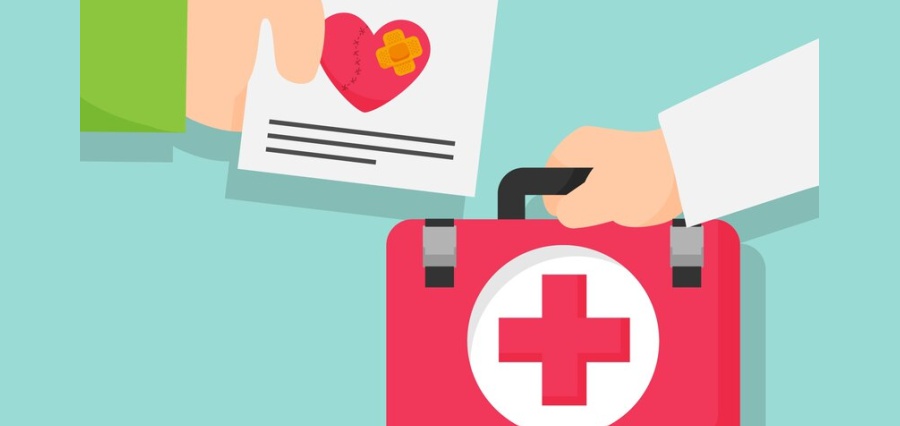In a medical emergency, every second counts, and the actions taken by a first aider can be the difference between life and death. Although they are not doctors, first-aiders play a crucial role in providing immediate care.
However, many hesitate to get a first aid certification due to the fear of making mistakes and facing legal consequences. These legal concerns often arise because first aiders may worry about being held liable if their actions unintentionally cause harm. However, the punitive damages are more if you delay in providing first-aid.
In this blog, we will explore the legal aspects of first aid certification, the responsibilities it brings, and the opportunities it opens up for those willing to step up in times of need.
Duties and Responsibilities of the First Aid Professionals
As a first aid certification holder, you are expected to deliver certain medical assistance to someone who is sick or injured or experiencing any medical emergency before advanced medical help arrives in the scenario. The first aiders are expected to serve the following responsibilities to the injured and sick individuals:
- Assess the situation of the victim quickly and minimize the risk of casualty.
- Provide initial care to stabilize the patient’s condition before any professional and more advanced medical help arrives.
- Communicate with the victim constantly to ensure the patient is calm. If the victim is conscious, you can explain what you are going to perform before you do it.
- Monitor the injured person’s vital signs, such as body temperature, blood pressure, pulse rate, and breathing rate.
- As a first aid practitioner, you should Keep records of the incident’s time and location, the casualty’s injuries, first aid treatment, etc.
Understanding The Legal Aspect of First-Aid Certification
First-aid certification is essential for both legal compliance and effective emergency response. It ensures that individuals are prepared to provide immediate care and reduce potential liabilities for employers, especially in high-risk environments.
Certification also requires staying updated with current standards, which is crucial for maintaining compliance with legal requirements.
Key Points to Consider:
- Certification is often legally required in high-risk industries.
- Proper first-aid measures reduce legal liabilities.
- Ongoing education ensures compliance with changing laws.
- Certification prepares individuals to act responsibly during emergencies.
- Good Samaritan Laws
Good Samaritan laws are designed to protect health professionals from legal trouble when they provide emergency first aid. These laws are in place in most states and have a few key requirements:
- You must act in a way that is careful and sensible, just like any reasonable person would.
- If the victim is conscious, you should ask for their permission before helping them.
- You need to stay with the victim until someone with similar or better training arrives to take over.
These laws help ensure that those who step in to help during an emergency are protected as long as they follow these basic guidelines.
- Consent, Confidentiality, and Privacy Concerns
Consent, confidentiality, and privacy are important aspects of providing first aid. Here’s a breakdown:
- Consent: Before giving first aid, it’s crucial to ask the injured person if they agree to receive help. If they are conscious and able to respond, always get their verbal permission before you begin.
- Confidentiality: Any information you learn about the person’s condition or situation during first aid should be kept private. It’s important not to share details about the injury or the person’s condition with others unless it’s necessary for their care.
- Privacy: While providing first aid, ensure that the person’s privacy is respected. This means conducting any necessary procedures in a way that protects their dignity and keeps them as comfortable as possible.
These principles help build trust and ensure that the person receiving first aid feels safe and respected.
Ongoing Responsibilities of Certified First Aiders
The duties and responsibilities of first aiders are expected to extend beyond the emergency response to sick or injured patients. These include:
- Keeping your first aid skill up to date: Once you finish your emergency first aid certification course successfully or training for first aid at work, you will receive the certification valid for 3 years. So, as an emergency professional, you need to update your certificate to be a valid first aid service provider in the market.
- Being aware of potential risks at your workplace: It is very crucial to be aware in the workplace to maintain a safe and healthy environment. Recognizing and addressing potential dangers helps the first raiders to prevent further risk and secure the health condition of the patient.
- Being familiar with the first aid equipment: You should know all about the first aid practices and equipment, from first aid boxes to AEDs (defibrillators). You should know exactly which equipment you should use and when and how.
Empower Yourself with First Aid Certification
While first aid professionals play a significant role in emergencies, they should be aware of the legal boundaries and liabilities that can result from their actions. Understanding the opportunities of first aid training and the responsibility of a good Samaritan will provide you with important insight to navigate your responsibility as a first aider safely.
So join CPR to ensure your first aid certification and enhance your skill in first aid relief while respecting the rights of the patients and providing them with potentially life-saving treatment.














